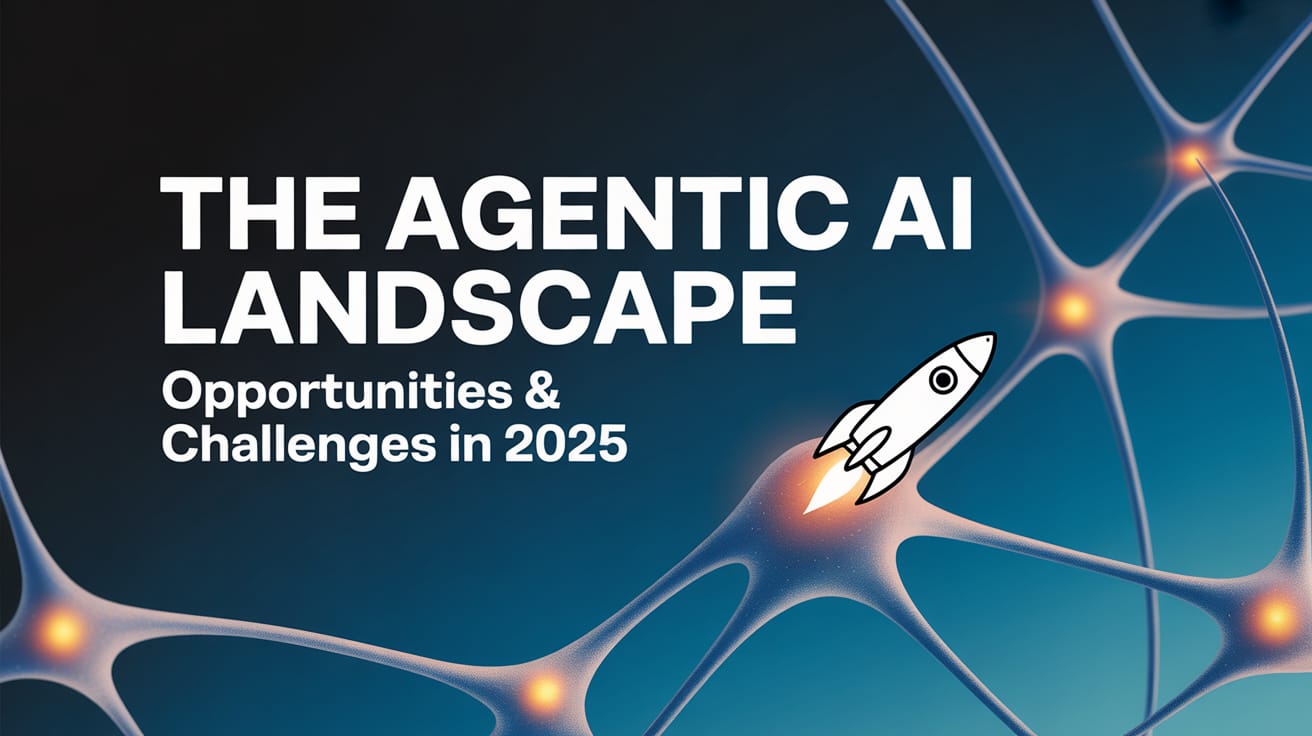📌 THE MOMENT WE'RE IN
Enterprise AI adoption is now mainstream—78% of organizations use AI in at least one business function[1]. Yet agentic AI—autonomous systems that reason, plan, and act independently—remains in early pilot phases.
This digest synthesizes 10 recent articles (5 breakthroughs, 5 challenges) to give you the unfiltered perspective you need right now.
The opportunity: $450-650 billion in potential revenue by 2030[2]. The reality: 80% of organizations encounter risky agent behaviors, and 69% of experts say new governance approaches are urgently needed[15][17].
🔥 5 BREAKTHROUGH ADVANCES
1️⃣ Six Lessons from 50+ Early Deployments
McKinsey's analysis reveals success isn't about sophisticated AI—it's about disciplined workflow redesign. Winning organizations map workflows first, define metrics upfront, design reusable components, embed cross-functional teams, and industrialize delivery[3].
The most mature treat agentic AI as an organizational transformation tool, not a technology deployment[3].
Source: McKinsey - "One year of agentic AI" (September 2025)[3]
2️⃣ Economic Impact: $450-650B by 2030
Real examples from the field:
🏭 Automotive supplier: 50% reduction in test validation time
🚚 Truck OEM: 40% order intake increase in 3-6 months
💼 ServiceNow users: 70% faster ticket resolution (30 min → 7-8 min)
Unlike traditional automation, agentic AI reengineers value chains and enables entirely new business models[2].
Source: McKinsey - "Empowering advanced industries" (September 2025)[2]
3️⃣ Small Language Models Enable Scale
SLMs deliver 10-30x cost reductions versus large models for specialized tasks while enabling on-device deployment[5][6]. Heterogeneous systems combining SLM specialists with LLM orchestrators transform scale economics: cost-per-agent decreases as you scale[5].
Source: NVIDIA Research - "Small Language Models" (June 2025)[5]
4️⃣ The Agentic Organization Emerges
McKinsey introduces a new operating model: humans and AI agents working side by side at near-zero marginal cost[7]. This requires transformation across four dimensions: strategy, unit of transformation, team structure, and delivery model[7][9].
Organizations navigating this successfully move from 5% project success rates to 50%+[9].
Source: McKinsey - "The agentic organization" (September 2025)[7]
5️⃣ Multi-Agent Orchestration Multiplies Value
Individual agents are powerful. Orchestrated multi-agent systems are exponential. Platforms like ServiceNow's AI Orchestrator demonstrate that true agentic AI power comes from coordinated agent networks, not isolated deployments[4].
Organizations mastering orchestration move orders of magnitude faster[12].
Source: VentureBeat - "Agentic AI orchestration" (January 2025)[4]
⚠️ 5 CRITICAL CHALLENGES
1️⃣ Security Crisis: 80% Encounter Risky Behaviors
80% of organizations report risky agent behaviors—data exposure, unauthorized access, chained vulnerabilities cascading across agents[15]. EchoLeak (CVE-2025-32711) showed how prompt injections trigger autonomous data exfiltration[16].
Research reveals 100% of agents are vulnerable to inter-agent trust exploits[16]. Traditional security models fail. Organizations need agent-specific threat frameworks treating AI as "digital insiders"[15].
Source: McKinsey - "Agentic AI security" (October 2025)[15]
2️⃣ Governance Gap: 69% Need New Approaches
69% of AI experts agree agentic AI requires entirely new management frameworks[17]. Traditional governance designed for human agency fails for autonomous systems. Critical gaps include non-human decision-making opacity, speed/scale mismatches, and accountability ambiguity[17].
The regulatory landscape is fragmented (EU's AI Act vs. U.S. sector-focused approach), forcing organizations into governance trilemmas[18].
Source: MIT Sloan - "Agentic AI at Scale" (September 2025)[17]
3️⃣ Accountability Black Hole
Who's responsible when agents fail? This remains fundamentally unresolved[17]. AI lacks legal personhood. Multi-agent complexity makes causation nearly impossible to trace. Shadow IT risk is real—departments spin up agents without oversight[19].
The EU's AI Liability legislation stalled in 2025[18].
Source: Forbes - "Shadow IT and AI Agents" (October 2025)[19]
4️⃣ Explainability Crisis
Auditing agentic AI is fundamentally harder than traditional systems. Black-box reasoning, dynamic behavior evolution, and opaque decision-making complicate compliance[20][22].
Most agent development efforts stall before production—teams resort to manual "vibe tracking" assessments. Result: only 5-10% reach production[23].
Emerging solutions (Databricks' Agent Bricks, Meta's Self-Taught Evaluator) remain immature[21][24].
Source: ISACA - "Auditing Agentic AI" (September 2025)[20]
5️⃣ Integration Barriers: Only 5% Scale Successfully
Only 5% of pilot projects scale due to technical debt, data fragmentation, skills shortages, immature platforms, and organizational sprawl[25]. Building enterprise data products takes 18-36 months[26]. Change management—earning trust, driving adoption, establishing governance—remains the real bottleneck[25].
Source: VentureBeat - "Why agents don't reach production" (June 2025)[23]
💡 THREE TAKEAWAYS FOR LEADERS
1. Competitive advantage comes from execution discipline, not early adoption. Governance and security matter most now.
2. Economics favor the disciplined. Organizations redesigning workflows (not just automating tasks) capture the $650B opportunity[2][5].
3. Security and governance are your competitive moat. Solve these first to move fastest[15][17].
🎯 WHAT TO DO NOW
✅ Audit agent deployments for security gaps
✅ Map workflows where agents add genuine value
✅ Establish governance frameworks before scaling
✅ Invest in evaluation frameworks early
✅ Build cross-functional transformation squads
The organizations that will win in 2026 need to move decisively on governance, security, and orchestration today.
📚 Sources
[1] McKinsey - State of AI (March 2025) [2] McKinsey - Empowering advanced industries (September 2025) [3] McKinsey - One year of agentic AI (September 2025) [4] VentureBeat - Agentic AI orchestration (January 2025) [5] NVIDIA/arXiv - Small Language Models (June 2025) [6] Aisera - Small Language Models (September 2025) [7] McKinsey - The agentic organization (September 2025) [8] McKinsey - Seizing advantage (June 2025) [9] McKinsey - CEO strategies (September 2025) [10] TechWize - Multi-Agent Workflows (July 2025) [11] Everest Group - ServiceNow Knowledge 2025 (August 2025) [12] HuggingFace - Multi-Agent Systems (May 2025) [13] Constellation - Agentforce 360 (October 2025) [14] HuggingFace - 15 Agentic Frameworks (December 2024) [15] McKinsey - Agentic AI security (October 2025) [16] arXiv - Agentic AI Security (2025) [17] MIT Sloan - Agentic AI at Scale (September 2025) [18] Forbes - Governance without stifling (September 2025) [19] Forbes - Shadow IT (October 2025) [20] ISACA - Auditing challenges (September 2025) [21] SCIRP - Agent evaluation (September 2025) [22] Kore.ai - AI Agent Evaluation (October 2025) [23] VentureBeat - Why agents don't scale (June 2025) [24] Toloka - Evaluation standards (October 2025) [25] McKinsey - Seizing advantage (2025) [26] McKinsey - Life science enterprises (September 2025)
Ready to lead through the agentic AI inflection point? Share your biggest challenge in the comments.
